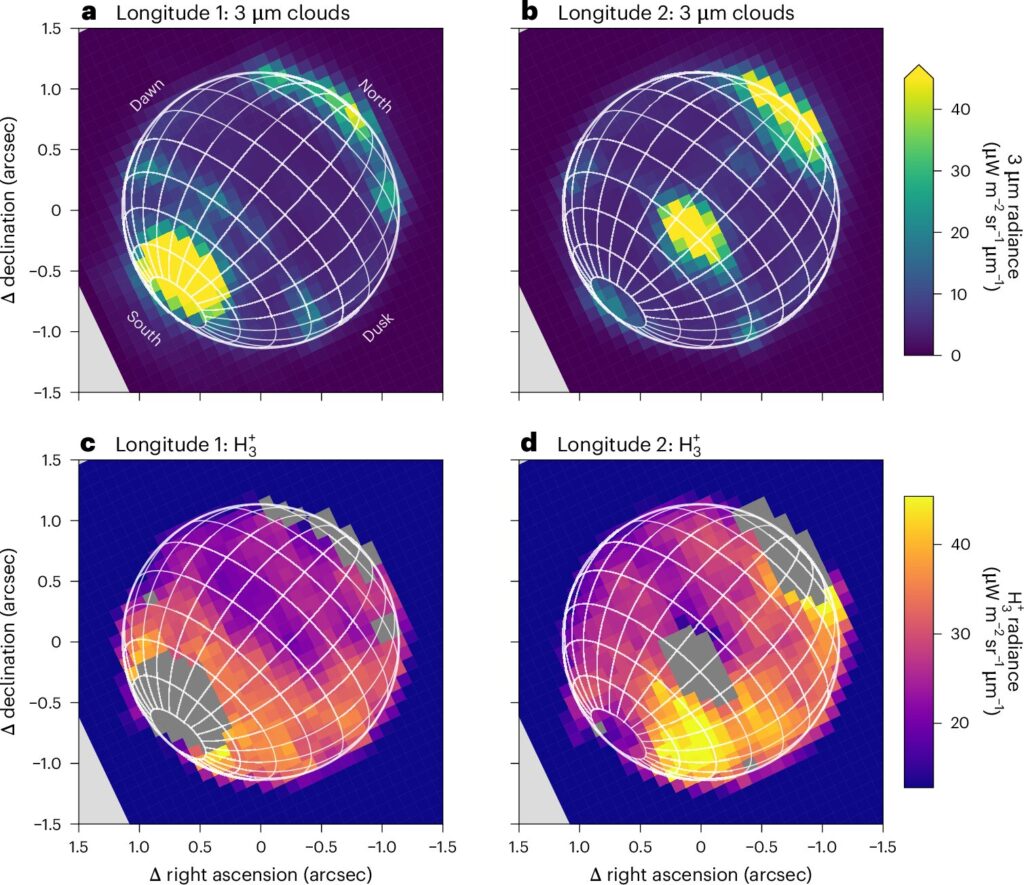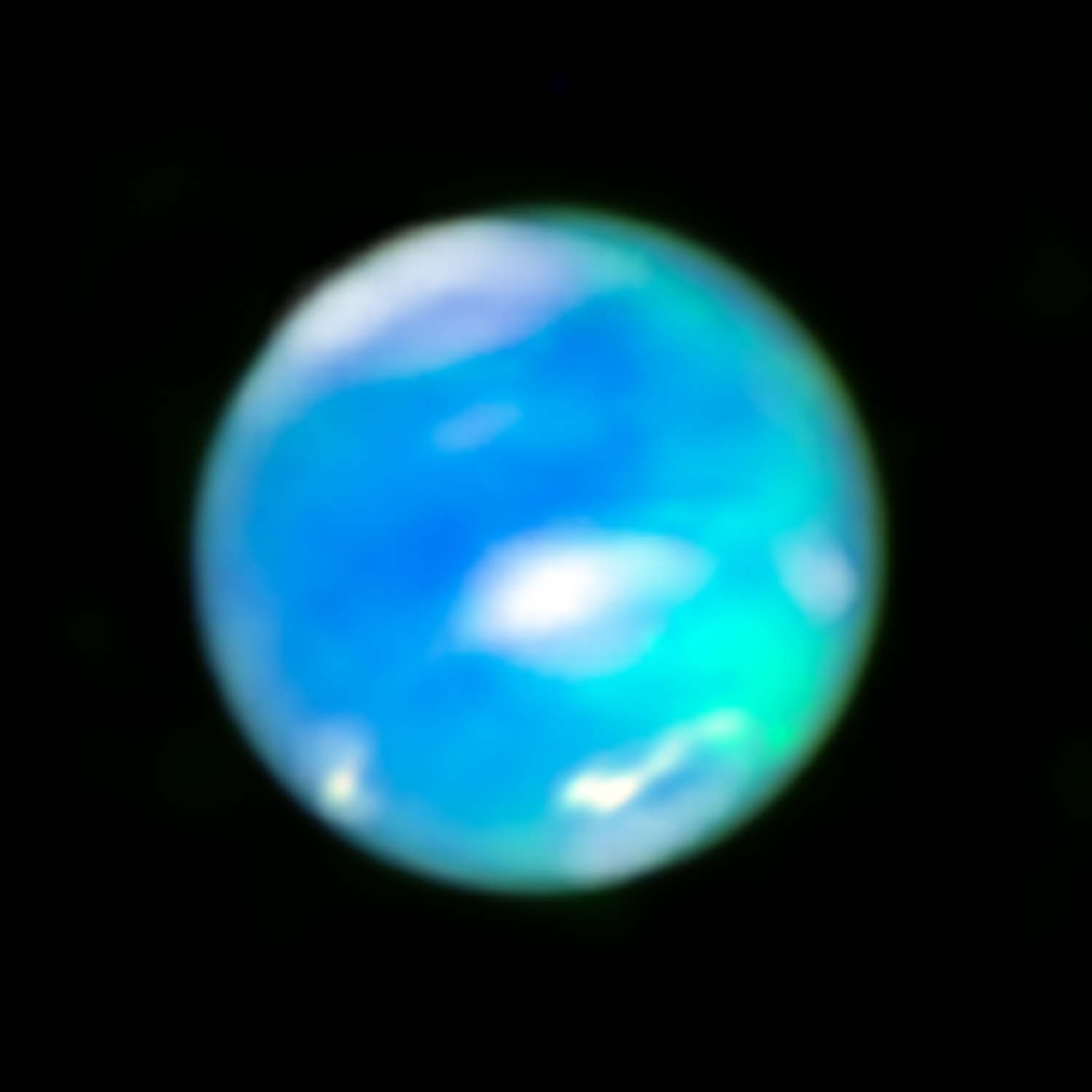Neptune, the enigmatic ice giant, drifts in the cold, distant reaches of our solar system, orbiting the sun from a staggering distance of nearly 3 billion miles. This deep-blue world, long shrouded in mystery, has just revealed one of its most elusive secrets—auroras, dazzling displays of atmospheric light that have been detected on other giant planets but had remained undetected on Neptune for decades. Thanks to NASA’s James Webb Space Telescope (JWST), astronomers have finally captured the breathtaking auroral activity on Neptune in unprecedented detail, providing new insights into the planet’s unique magnetic field and atmospheric dynamics.
A Long-Awaited Breakthrough in Planetary Science
Auroras occur when charged particles, often originating from the sun, become trapped in a planet’s magnetic field and collide with its atmosphere, releasing energy in the form of light. These spectacular displays have been observed on Earth, Jupiter, Saturn, and Uranus, but direct imaging of auroras on Neptune has remained elusive—until now.
NASA’s Voyager 2 spacecraft, which flew past Neptune in 1989, hinted at auroral activity, but the technology at the time was not powerful enough to confirm it with certainty. Ground-based telescopes also struggled to capture clear evidence due to Neptune’s vast distance and faint light. Now, with JWST’s powerful Near-Infrared Spectrograph, astronomers have finally unveiled Neptune’s auroras in stunning clarity.
A Vision in Infrared: Webb’s Groundbreaking Discovery
The observations, made in June 2023, provide not only the first clear images of Neptune’s auroras but also a detailed spectrum of the planet’s upper atmosphere. The data revealed something astonishing: a strong emission line from a rare molecule known as trihydrogen cation (H₃⁺), a key indicator of auroral activity.
“H₃⁺ has been a clear signifier of auroras on Jupiter, Saturn, and Uranus, and we expected to see the same on Neptune,” explained Heidi Hammel, a Webb interdisciplinary scientist. “But we never had the right tools to confirm it—until Webb.”
For the first time, astronomers were able to clearly visualize Neptune’s glowing auroras, appearing as bright cyan-colored splotches in Webb’s infrared imagery. This marks a historic moment in planetary science, completing the missing piece of the puzzle in our understanding of auroras across the solar system’s giant planets.

A Magnetic Mystery: Why Neptune’s Auroras Defy Expectations
Unlike Earth, where auroras are primarily confined to the polar regions, Neptune’s auroras appear at mid-latitudes, an unusual and unexpected finding. On Earth, the northern and southern lights are concentrated around the poles because they occur where the planet’s magnetic field lines guide charged particles into the atmosphere. However, Neptune’s auroras are found much closer to the planet’s equator—comparable to where South America is located on Earth.
This bizarre positioning is due to Neptune’s highly unusual magnetic field. When Voyager 2 flew by in 1989, it revealed that Neptune’s magnetic field is tilted by a staggering 47 degrees relative to its rotational axis. This extreme tilt, combined with the planet’s complex internal dynamics, means that its auroras appear in places that seem counterintuitive.
“This discovery tells us that Neptune’s magnetosphere is behaving in ways we don’t yet fully understand,” said Henrik Melin, lead author of the study and a researcher at Northumbria University. “It’s an entirely new frontier in planetary magnetism.”
The Chilling Secret Behind Neptune’s Faint Auroras
While the discovery of auroras is groundbreaking, another revelation has left scientists astonished—Neptune’s upper atmosphere is dramatically colder than previously thought. Comparing data from JWST with Voyager 2’s measurements, astronomers found that the upper atmosphere has cooled by several hundred degrees since 1989.
“I was shocked,” Melin admitted. “In 2023, the temperature was just over half of what Voyager 2 measured.”
This extreme cooling may explain why Neptune’s auroras have remained so difficult to detect. Scientists had long assumed that Neptune’s auroras would be as bright as those on Jupiter and Saturn, but a significantly colder atmosphere results in much fainter emissions. This suggests that Neptune’s upper atmosphere is far more dynamic than previously believed, capable of undergoing massive temperature shifts despite being over 30 times farther from the sun than Earth.
What’s Next? A New Era for Ice Giant Exploration
The discovery of Neptune’s auroras marks just the beginning of a new era in studying ice giants. Armed with these new findings, astronomers now plan to monitor Neptune throughout an entire solar cycle—an 11-year period of fluctuating solar activity. Understanding how Neptune’s auroras change over time could provide critical insights into how its magnetic field interacts with solar wind at such an extreme distance.
“As we dream of future missions to Uranus and Neptune, Webb has shown us how crucial it will be to have instruments tuned to infrared wavelengths to study auroras,” said Leigh Fletcher of the University of Leicester.
This discovery not only sheds light on Neptune’s atmosphere but also has profound implications for exoplanet research. Many exoplanets found in distant star systems are Neptune-sized, and understanding how Neptune’s magnetic field and atmosphere interact with solar particles could help astronomers better predict the conditions on these alien worlds.
Conclusion: A New Window into the Outer Solar System
The James Webb Space Telescope’s historic detection of auroras on Neptune has opened an entirely new chapter in our understanding of the outer solar system. This discovery not only confirms that all four gas giants host auroras but also provides crucial insights into Neptune’s strange magnetic field, atmospheric temperature shifts, and interactions with the distant solar wind.
As astronomers continue to explore Neptune with Webb, new mysteries are bound to emerge, reshaping our knowledge of the ice giants and their role in the grand cosmic dance of the solar system. For now, one thing is certain: Neptune, the farthest known planet from the sun, is far from a cold, lifeless world—it is alive with dynamic, unseen forces that we are only just beginning to comprehend.
Reference: Henrik Melin et al, Discovery of H3+ and infrared aurorae at Neptune with JWST, Nature Astronomy (2025). DOI: 10.1038/s41550-025-02507-9
